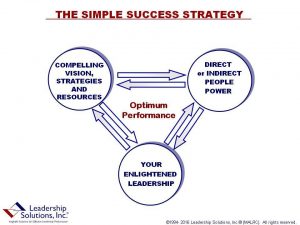by Peter A. Arthur-Smith, Leadership Solutions, Inc.®
“We’ve gone from the Model T to the Tesla and from the switchboard to the smartphone. Yet high school has remained frozen in time.” As displayed on XQ Institute’s Website: as reported by front-page Houston Chronicle article,’ Furr Real! High School wins $10 million prize,’ September 2016. LSI asks and answers, “Why is that?” Read on…
 |
Bertie Simmons is the high school Principal who was called out of retirement in 2000 – she is now 82 – to turn around troubled Furr High School in Houston. It was a badly dysfunctional place at that time and was ruled by rival gang members. Hundreds were suspended every year and less than 50% of its students graduated.
It took a lot of courage on her part to take on such a significant assignment. Staff apparently greeted her by placing dead fish on her desk and cigarette butts in her toilet. A student also threw a classmate through a plate glass window on that initial day. You couldn’t visit the local park owing to gang activity.
Even so, due to her leadership instincts, Simmons unwittingly applied the enlightened leadership pathway approach to her desperately challenging assignment. She set about changing things in ways that complement our simple success strategy (pathway) below:
 |
» Making classes less boring and more consistent with the smartphone
generation.
» Stopping sounding bells between classes, during more recent times,
to allow greater flexibility for both students and teachers.
» Doing away with sages on the stage, where teachers lecture to their
classes of students.
The above three relate to the compelling vision and strategies in model above.
Additionally, she and her team took a different tack with their direct
and indirect people power: that is, students – see model above – as follows:
» Turning students into problem solvers.
» Giving students more freedom to pursue their interests.
» Giving them more experiences out of the classroom.
» Giving students more choices, so as to teach them to make wiser decisions.
From an enlightened leadership perspective – see paradigm above: She and her team figured out how to present their students with more practical and inspiring projects.
A key point to her vision includes a clear purpose, such as: ‘One of the purposes of education is to bring joy into the lives of people.’ And this purpose is quite different from her current strategic vision: “I hope five years from now you will see kids coming out of school truly prepared for the 21st century with the skills and knowledge to be successful and happy.” More enlightened organizations have both a vision and a purpose, where their vision expresses their organizational aspirations and their purpose defines why they exist for the benefit of their customers and constituents.
Furr High School competed against 700 other US high schools to become one of the ten lucky ones that would receive $10M out of a pot of $100M, put-up by Laurene Powell Jobs, widow of Steve Jobs the well known founder of Apple computers. Furr will receive $2M a year over the next five years. Simmons, along with her team, already has a vision of where that money resource – see prism model above – will be invested, in such things as:
» Help paying for a new coordinator for a new mentor program.
» An administrator to work evenings.
» A couple of social workers.
» A support center for new immigrants.
Ultimately, the sponsor of this funding competition, XQ Institute, has its own vision: ‘To get school leaders to join with
students, staff and community members to revamp high schools to better prepare students for college and the workforce.’ This is brilliant, since it shows that XQ recognizes what most academic institutions don’t recognize – that is, the ultimate beneficiary of an academic institution’s student output is society; in term of companies, non-profits, government and various other external constituents. Even the more enlightened academic institutions believe they exist for the benefit of their students rather than their faculty. The even more old fashioned institutions behave as if they exist for their faculty’s benefit. Is this why so many of our high schools are “frozen in time”?
Such traditional high schools are also “frozen in time” because they are beholden to the late 19th and early 20th century concepts of bureaucracy, which is what Simmons, her faculty and staff have worked so hard to break away from. While it’s taken them some time, since breaking away from bureaucratic procedures are a tough drug to break free from, they are now reaping the benefits of considerably higher graduation rates and far fewer suspensions. Their students are not overlooked for the sake of the system. Bureaucracy was something invented eons ago for military organizations and royal and stately households. It has no place in the 21st century.
News articles, like this one about Furr, go to show that enlightened pathfinding not only moves an organization out of chaos and poor performance, but it also brings considerable rewards. In this case, it was a grant of $10M to bring even greater future rewards to Furr and nine other fortunate high schools and their constituents: that is, their students, teachers, leadership, and Board of Governors. In the case of students – more resources for support staff and facilities. For teachers – additional staff, in the form of a coordinator, an evening administrator and social workers – to provide them with more breathing room for teaching and interacting with students. For leadership – to turn their high school domain into an environment where students can excel – over 90% of Furr’s students now graduate.
Corporations both big and small can take a leaf out of this principal’s book by similarly figuring out an optimum pathway for their domains to excel. From that pathway, they will attract additional revenues and resources, thereby allowing their performance to go from strength to strength. Indeed, corporations, small enterprises, non-profits, local government, national government, community services and universities are all customers of high schools like Furr. Well qualified graduates with good attitudes are what they seek.
As said earlier, too many academic entities believe they exist for the benefit of faculty or students and are not especially clear about who their customers really are. In fact, some even shun the idea that they have customers. They see themselves as ivory towers unto themselves – oases among the turmoil of society. No wonder they are ‘frozen-in-time.’
It is to be hoped that Bertie Simmons’s high school, as well as the other nine recipients of these valuable prizes, will serve as bellwethers for many other academic ventures. Ever escalating demands of industry, governments, non-profits, sports organizations and other institutions are constant challenges for meeting the ever growing needs of a world economy. Hence the output of high schools and other academic institutions has to forever grow in competence, attitude and appropriate talents to meet that need. Cultivating those same qualities will also encourage greater career satisfaction among ex-students, which in turn will build more content societies…and so the cycle is complete.
To find out more about building a strategic pathway, talk with:
